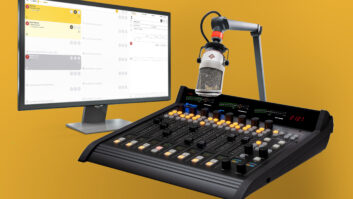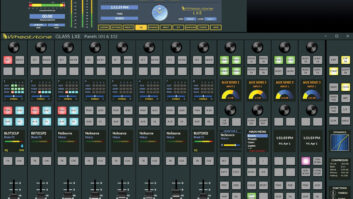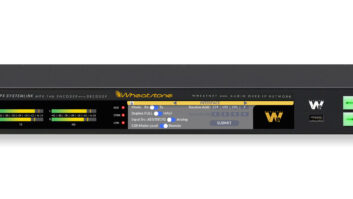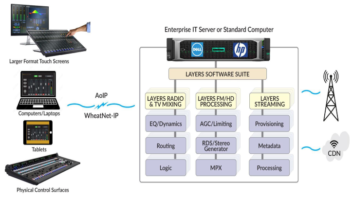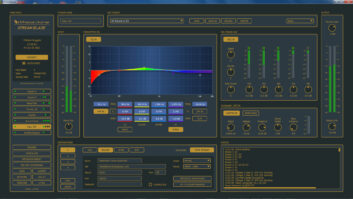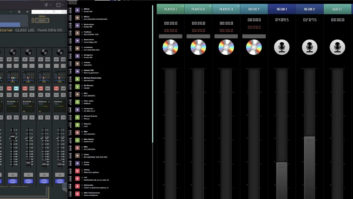BAKERSFIELD, CALIF. — I was out of town and enjoying a mini vacation from my duties as American General Media’s corporate engineer when I got the call. Two politicians had shown up unexpectedly at our studios in Bakersfield at the same time, and staff wanted to do a “town hall meeting/mini debate.” The main studio was too small, and they needed to move things to our larger performance studio down the hall.

I asked when they wanted to make the switch, and they said about six minutes after the news. No problem. I pulled out my iPad, VPNed into our WheatNet-IP network server and, using the system’s Navigator software, I set up a cross point between the performance studio and the main studio about 300 feet away. I then mapped each mic to its own console channel and routed talkback from the studio to the host headphones.
I was able to do this faster than they could have walked down the hallway and done a mic check.
FLEXIBLE
This sort of flexibility is why I decided to go with WheatNet-IP audio networking after a fire destroyed American General Media’s Bakersfield studios almost two years ago. The fire started with faulty electrical in the TOC, melting the servers there. The smoke damage was so extensive, the studio facility for all six of AGM’s stations in Bakersfield, California, was a total loss.
AGM, which has stations throughout California, New Mexico and Colorado, had WheatNet-IP in the Albuquerque facility so I was more than familiar with the system. For Bakersfield, I did look at other systems but decided for certain to go with WheatNet-IP when I ran across a WheatNet-IP system installed by a European vendor to showcase their on-air lights. It says something when a vendor buys a product to make their product look good.
I purchased IP-12 consoles for the six on-air studios, each with talk studios and a shared central mixing studio with glass all around, plus a large production studio and a performance studio complete with a stage and lighting. The entire facility was outfitted with Wheatstone’s modular QuickLine furniture and networked together through the WheatNet-IP audio network. There’s not a soundcard or relay box in sight. Through IP audio drivers, I was able to tie in critical pieces of audio gear. For example, VoxPro digital audio recorders/editors are in every on-air studio, networked through WheatNet-IP for intense show productions requiring shared files and editing functions.
In addition, I was able to add video to our webstreams using camera automation tied into WheatNet-IP in each studio, and enhance shows and sportscasts with graphics from its new digital content department complete with greenroom. It’s all controlled and managed through one IP audio network platform accessible from phones or laptops.
As expected, the installation was fairly stress-free. It took about 10 minutes per studio to install the QuickLine furniture, which is why they call it QuickLine. This is Wheatstone furniture that comes in five modular components that are reversible, so you can get up to 32 functional configurations. Hooking up the WheatNet-IP system was straightforward. They’re not kidding when they call it plug-and-play. I simply plugged the Cat-6 cable into a Blade (I/O unit) and it self-installed into the network.
This was certainly a lot easier than most of the studio projects I have managed in the past — and I’ve been involved in 900 studio projects in my career as a broadcast engineer. I can recall the enormous amount of time and engineering spent on tracing, stripping and punching down wire and making up connectors. By the time you add in time and labor, plus the punch down tools, shrink tubes, external relays and matchboxes, it can easily cost four times as much to do a punchblock routing system as an AoIP system. In the case of WheatNet-IP, I just put the Blade in a rack, got the premade XLR cables sitting on the bench and plugged it in. Just about everything is done using software; and by the way, we ordered all the connectors through Amazon, so it all came right to our door. The hardest part was ripping out the copper wiring that had been installed for the punchblock routing system used back in the day.
For information, contact Jay Tyler at Wheatstone in North Carolina at 1-252-638-7000 or visit www.wheatstone.com.





